Rachel Whitney,
Curator, Sapulpa Historical Museum
From 1923 to 1927, Eileen Hoyt toured with Broadway productions. “She made many theatrical appearances…she was also a soloist in a variety show at the Paramount Theatre shortly after its opening in 1926. She als made two 20-week tours of the Paramount Theatres circuit. She appeared in a touring of John Murray Anderson’s ‘Almanac’ show.” Hoyt also was the understudy for the leading role, “the principal soloist in a road company of George White’s ‘Scandals.’”
This week in Sapulpa history, on March 5, 1926, it was announced that the vocalist known as Eileen Hoyt, performed ‘Scandals’ to a Tulsa audience, while on her tour.

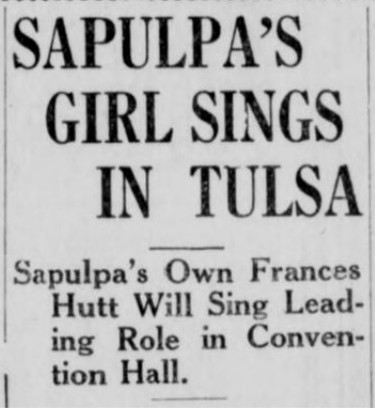
Eileen Hoyt was very well known in Sapulpa in the late 1910s and many years later, but under another name. France Eileen Hutt used a variation on her name as her stage name.
The Hutts family had moved to Sapulpa when Frances was only seven in 1910. Her father, O.T. Hutt, worked as a railroad worker, a brakeman for the Frisco Railway. Her mother, Lee Davis Hutt, was named after a famous relative; she was a descendent from the Jefferson Davis family of Missisisppi, the President of the Confederacy. The family lived at 1018 East Line Street.
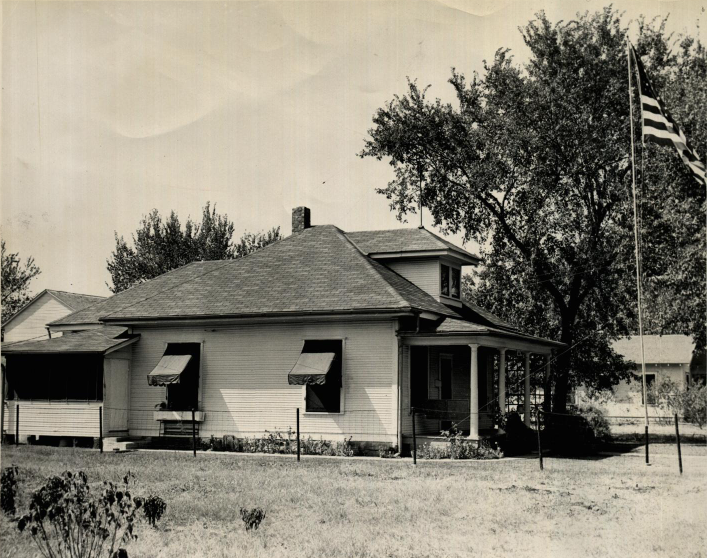
Frances would often perform stage plays, choirs, church groups, and events while in high school. She had a vivid imagination and a talented voice.
Frances had an older brother, Harold, and a younger sister, Marayanna. The trio would often play house together with the neighborhood kids. And one of France’s childhood dreams was to be married, to a president, and she would be “Mrs. President.” Another dream of hers would be “aspired to a singer’s career.”
Little did she know, these dreams may turn into a reality one day.

Frances graduated from Sapulpa High School in 1921 as Valedictorian. Unfortunately, the museum does not have a 1921 yearbook (nor any other of her years at Sapulpa), but a freshman image of her and her class appears in the 1918 Sayonara yearbook for the high school.
After graduation, Frances moved to Chicago and then New York to pursue her opera career. She attended the Chicago Musical College and the Stephens’ New York Singing School. While in Chicago, she met a charming man named Thomas Dewey. Dewey was also studying music and the performing arts. They moved to New York together and would marry in 1928.
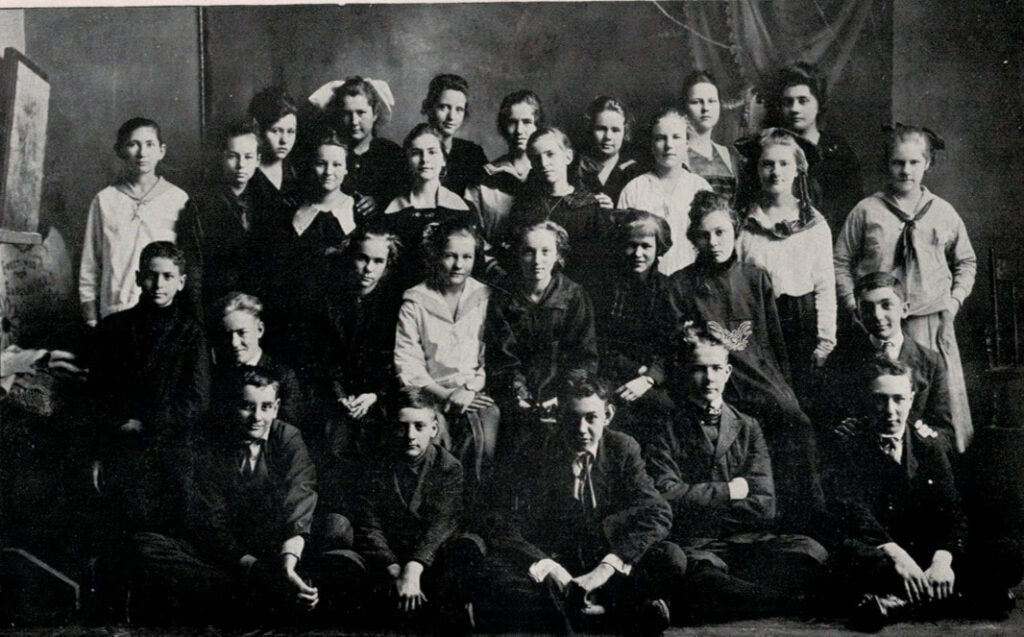
“Convinced that he [Thomas Dewey] could never ‘set the opera world on fire,’ Dewey ultimately turned to law.” He graduated from Columbia University School of Law in New York. “Thomas Dewey would eventually revolutionize the methods of a criminal prosecutor.” He had always claimed, however, that his “first calling was as an opera singer.”
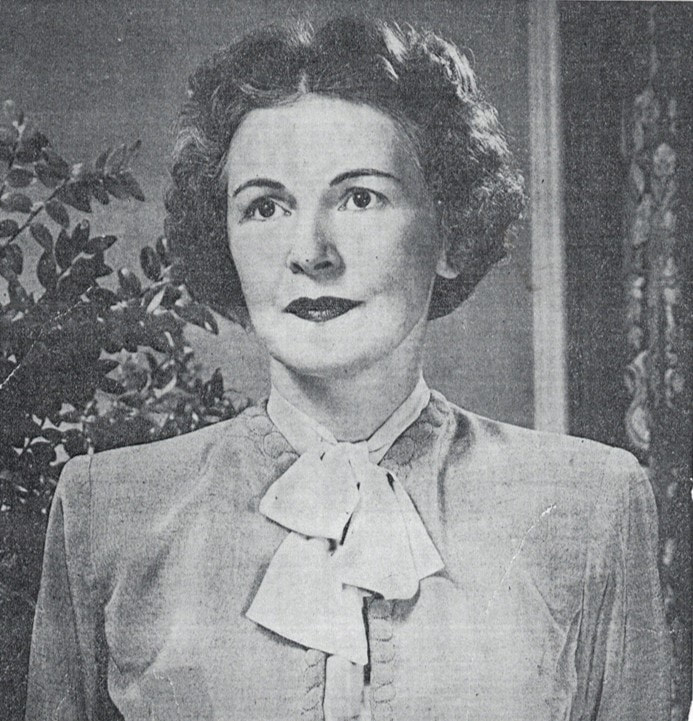
Frances Hutt, or Eileen Hoyt, had accomplished her dream of performing audiences around the country. Now married to a famous prosecutor in New York, she wanted to have children and end her touring career. “Although, she once sang professionally, she sought to avoid the spotlight after marrying Dewey. She was able to do so with marked success while Dewey won fame as a prosecutor of racketeers, from 1933 to 1938. She managed to keep herself and their two sons pretty much out of the public glare.”
Thomas Dewey, who was often said to be a “possessor of a marvelous, deep, rich baritone voice that would also make him the second most effective radio speaker in politics, after FDR,” became the 47th Governor of New York, elected in 1942, re-elected in 1946, and a third consecutive term elected in 1950.
As mentioned above, France dreamed of being married with children (check), performing on Broadway (check), and being named “Mrs. President” (un-checked so far).
Frances’ husband won the Republican party nomination to run against a third-term running President Franklin D. Roosevelt in 1940. Roosevelt won the re-election. But this did not end Dewey’s next run for the presidency.
In the next presidential election of 1944, Dewey once again was the Republican party nominee against the fourth-term-seeking President Franklin D. Roosevelt. President Roosevelt won the campaign but died soon after taking office again.
A “Frances Hutt Dewey Day” event occurred twice in Sapulpa. Both happened during the campaign tours for Thomas Dewey when they arrived in Sapulpa and Tulsa for a tour.
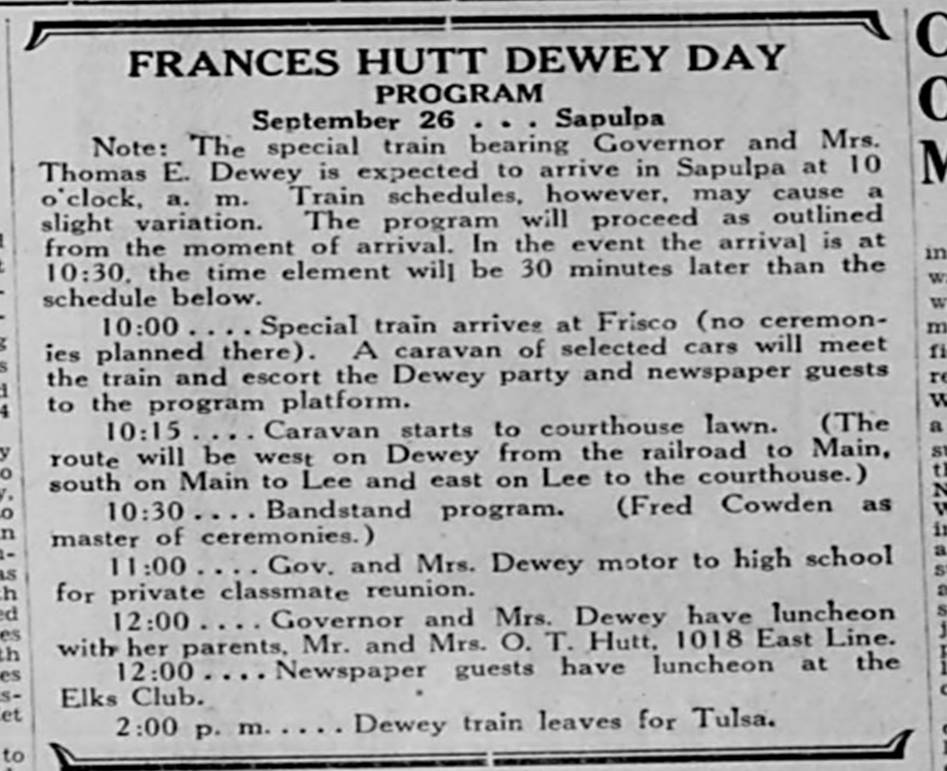
Dewey, once again, stepped up to the podium as the 1948 presidential campaign against President Harry S. Truman, who had been President Roosevelt’s Vice President in his last term. Dewey was projected to win. President Truman famously held up the Chicago Tribune newspaper that was printed the day after the election with the infamous headline across the front page “Dewey Defeats Truman.”
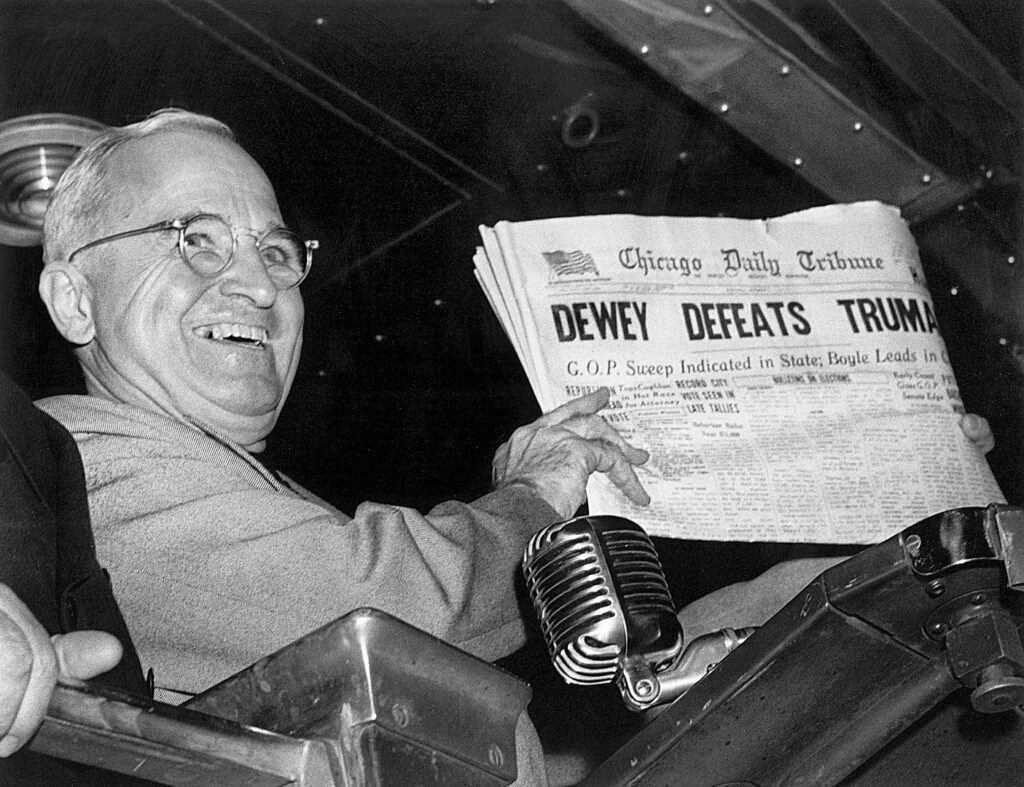
President Truman was re-elected. Mr. and Mrs. Dewey would not live in the White House. When the 1952 presidential election came around, Dewey played a significant role and helped secure General Dwight Eisenhower to become president.
France Hutt Dewey and Thomas Dewey raised their two sons, Thomas Jr. and John Martin in New York. The couple, with their love of music, gave their sons their first piano lessons. Frances tried to stay out of the spotlight once Thomas became Governor of New York in the 1940s. But the headlines of Eileen Hoyt and France Hutt are still remembered.










